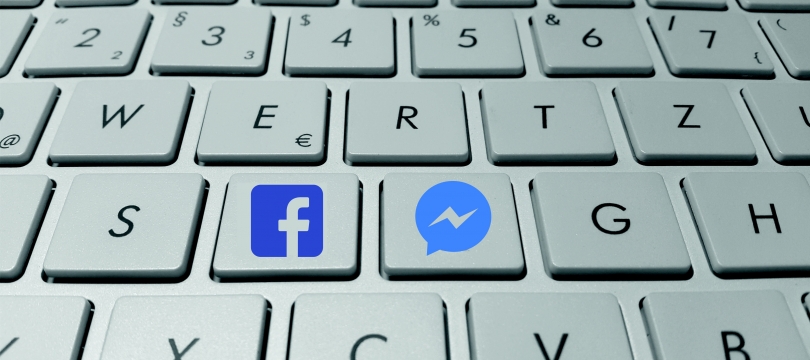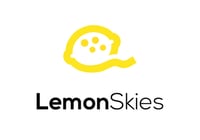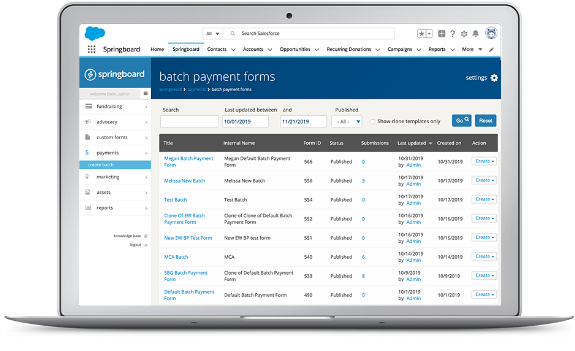Explore the Frontier of Facebook Fundraising: Messenger

 This is a guest contribution by our smart friend Olga Moshinsky Woltman of LemonSkies. It’s the second of a two-part series on the recent impact of Facebook on fundraising in the social sector. Read Like a Wrecking Ball: Facebook Birthday Fundraisers (part one) here.
This is a guest contribution by our smart friend Olga Moshinsky Woltman of LemonSkies. It’s the second of a two-part series on the recent impact of Facebook on fundraising in the social sector. Read Like a Wrecking Ball: Facebook Birthday Fundraisers (part one) here.
Facebook fundraising is like a really big deal, as in hit-the-billion-dollar-mark in November, and we will likely see its continued expansion and growth. Loads of Facebook users are now setting up fundraisers, usually because it is their birthday and Facebook reminds them to do something charitable. It only takes seconds to set up a fundraiser, and it’s easy to invite your friends (and people you vaguely remember) to contribute.
Because charities receive so little data about their Facebook fundraisers and donors, they are hamstrung in their ability to provide tips or encouragement throughout the fundraiser; express appreciation; or engage these motivated leads in future efforts. This inability to identify these people in your database(s) of record puts you at risk of communicating the old “it’s been awhile since you’ve given” message to someone who just contributed.
Read on for some brief background on tapping into Facebook Messenger to deepen and extend relationships with Facebook fundraisers.
Get to Know Facebook Messenger
One possible answer to this challenge is using Facebook Messenger to get in touch, show some gratitude, find out more about why fundraisers care about your mission, in order to cultivate a future relationship.
With 1.2 billion monthly users (yep, that’s a billion), let’s assume most of us are familiar with Facebook Messenger. Messenger facilitates communications with supporters or customers, just like via email. Except it’s not at all like email! Messenger, at least at this moment in time, has CRAZY high engagement: 70-88% open rate, depending on the source. How do you like them apples?
Another important difference is that Messenger is much more conversational and dynamic than email. If done right, Messenger marketing should feel less like a broadcast-out message and more as one-on-one interaction. That’s where Chat Bots come in to facilitate messenger communications that feel like actual chats.
Good Little Chat Bots to Automate Messenger Communications
“Bots” have negative connotations, but these chat bots are the good sort that facilitate communications via Messenger. Facebook lists over 100 providers in their messaging category with adorable names like Pancake, Smooth, and BotBonnie. With these chat technology providers, marketers have the tools to set up simple or complex triggered sequences of chat messages, similar to email drip campaigns, empowering us to apply best practices for fundraising coaching and stewardship.
Of course, there is more to this chat bot business. The conversation must be started via one of the several entry points that are user initiated or by matching an existing supporter via phone number and name to a person on Messenger. Because initiating engagement has a manual component, it can be very time-intensive when you consider the number of daily fundraisers set up for your cause.
How to Tap Facebook Fundraisers to Generate Leads?
But back to Facebook Fundraisers and building out a Messenger stewardship program: Thanking supporters is not only good manners, but it is also an investment in the future. The data (albeit limited at this point) suggest that Facebook Fundraisers are an entry point into the cause for the majority of people who set them up.
Some nonprofits are starting to dabble with the chat programs, and consulting groups are starting to emerge to help organizations set up Messenger programs that make donors and fundraisers feel appreciated. I am not here to endorse, but I did learn a LOT about this chat bot business from Jeremy Berman, one of the co-founders of GoodUnited. To him, a successful Messenger program increases three metrics:
- the number of donations made per fundraiser,
- number of email addresses captured, and
- retention (by identifying people who will support and engage with the cause in the future).
Berman also points out that while we as fundraisers and marketers are looking for ways to engage this cohort of supporters in other channels, it is also very important to communicate and steward them in the context and channel in which they chose to engage with the organization for the first time: Facebook.
If you are still not convinced about at least considering the Messenger route, here are a few parting thoughts:
- The fundraising potential of Facebook is vast, but only a small-ish percentage of users have engaged in this way thus far. We’re seeing the tip of the iceberg, and Facebook seems to be looking for ways to expand and grow this area (for instance, its recent announcement about expanding into Instagram Stories).
- Fundraising via this channel will likely become easier for users/donors. For example, once you’ve entered your payment information, you don’t have to re-enter it again on your next donation, reducing the friction to participate again. Fundraising via Facebook will likely become more predictable as patterns and seasonality begin to emerge, along with the maturity of this offering.
- Would you ever run an acquisition program and do absolutely nothing to follow up and engage further? We have a cohort of new people, pre-qualified and raising their hand to engage with our causes. Isn’t it just good sense to retain and steward?
If you would like to talk about Facebook fundraising or digital fundraising in general, please be in touch at owoltman@gmail.com or on LinkedIn!

